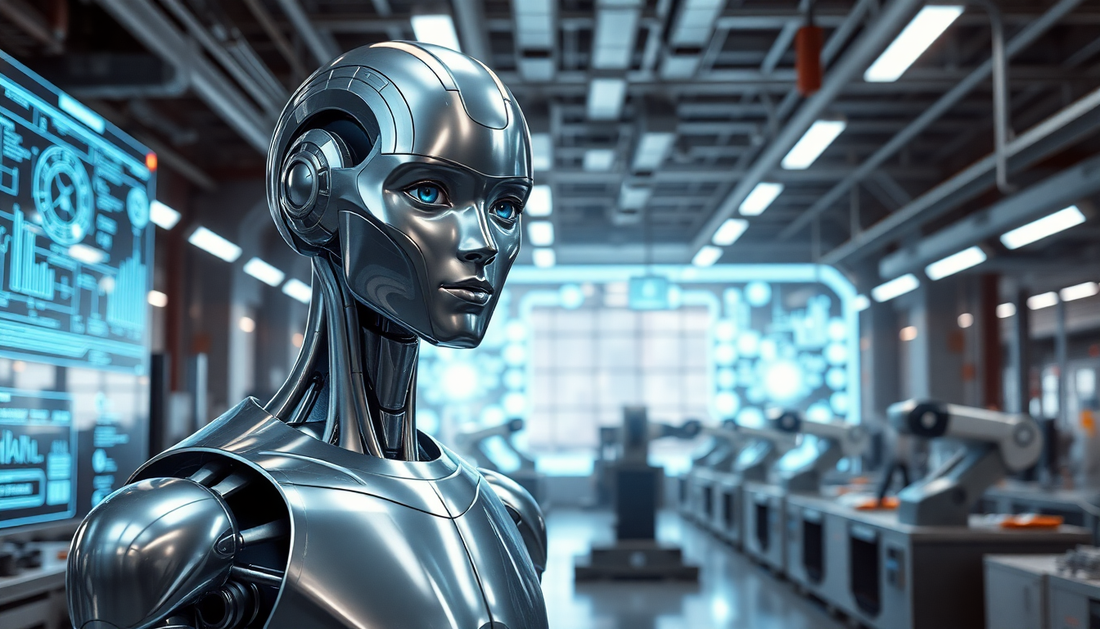
The Rise of Humanoid Robots: Exploring the Future of Automation
ShopgalaxyThe world of technology is rapidly evolving, and one of the most captivating advancements in recent years has been the rise of humanoid robots. These sophisticated machines, designed to mimic the appearance and capabilities of human beings, are poised to revolutionize various industries and transform the way we interact with technology.
Humanoid robots are not merely a figment of science fiction; they are a tangible reality that is shaping the future of automation. These remarkable creations are capable of performing a wide range of tasks, from intricate manual labor to complex problem-solving, all while exhibiting human-like behaviors and expressions.
One of the primary drivers behind the development of humanoid robots is the desire to create machines that can seamlessly integrate into human environments and collaborate with us on a more natural level. By replicating the physical and cognitive abilities of humans, these robots can navigate through spaces designed for human use, interact with people in a more intuitive manner, and even assist in tasks that require dexterity and adaptability.
The Versatility of Humanoid Robots
Humanoid robots are finding applications in a wide range of industries, from manufacturing and healthcare to education and entertainment. In the manufacturing sector, these robots are capable of performing tasks with precision and efficiency, often outpacing their human counterparts in terms of speed and consistency. In the healthcare field, humanoid robots are being used to assist in patient care, perform delicate surgical procedures, and even provide companionship to the elderly and those with special needs.
Moreover, the educational sector is also embracing the potential of humanoid robots. These intelligent machines can serve as interactive teaching aids, engaging students in hands-on learning experiences and even tailoring their instruction to individual needs. In the entertainment industry, humanoid robots are captivating audiences with their lifelike movements, facial expressions, and ability to interact with humans in novel and engaging ways.
The Ethical Considerations
As the development of humanoid robots continues to advance, it is essential to address the ethical implications of this technology. Questions surrounding the impact on employment, the potential for bias and discrimination, and the philosophical implications of creating machines that so closely resemble humans are all crucial considerations.
Policymakers, researchers, and the public must engage in thoughtful discussions to ensure that the implementation of humanoid robots is guided by principles of fairness, transparency, and accountability. By addressing these ethical concerns proactively, we can harness the benefits of this technology while mitigating potential risks and unintended consequences.
The Future of Humanoid Robots
The future of humanoid robots is both exciting and uncertain. As the technology continues to evolve, we can expect to see increasingly sophisticated and capable machines that can seamlessly integrate into our daily lives. From assisting in household chores to providing companionship and emotional support, the potential applications of humanoid robots are vast and far-reaching.
However, the true impact of this technology will depend on how we, as a society, choose to embrace and shape its development. By fostering a collaborative and responsible approach to the integration of humanoid robots, we can unlock new frontiers of innovation and create a future where humans and machines work in harmony to address the challenges of our time.
As we stand on the cusp of this technological revolution, it is crucial that we remain vigilant, curious, and open-minded. The rise of humanoid robots presents us with both opportunities and challenges, and it is up to us to navigate this uncharted territory with wisdom, empathy, and a steadfast commitment to the betterment of humanity.




